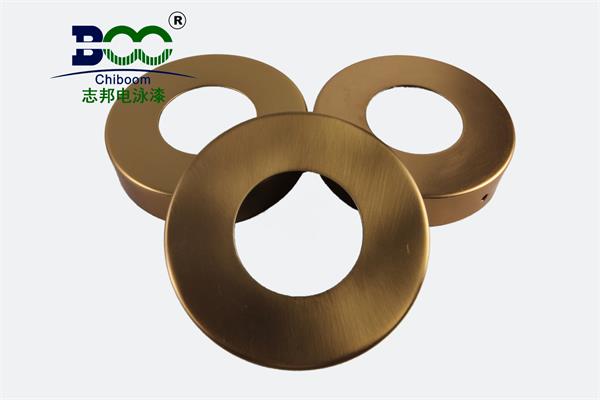Technological Innovations in Electrophoretic Paint Treatment: Environmental Protection and Efficiency Drive New Industry Trends
In the fields of automobile manufacturing, home appliance production, and precision metal processing, electrophoretic coating technology has become a core process for primer application due to its high corrosion resistance, uniform film thickness, and environmental advantages. However, as the industry faces escalating demands for sustainable development, electrophoretic paint treatment technologies are undergoing a comprehensive upgrade across the entire value chain—from coating processes to waste paint recovery. Recently, several leading enterprises and research institutions have achieved breakthroughs in electrophoretic paint treatment, providing new paradigms for the industry's green transformation.

Front-End Treatment Innovations: Thin-Film Systems Dominate
Traditional phosphating processes, plagued by heavy metal content, high energy consumption, and large sludge volumes, are being replaced by advanced thin-film pretreatment technologies. For instance, in automotive body coating, next-generation thin-film systems utilize phosphate-free formulations based on silane and zirconium salts to form nanoscale conversion films on steel, aluminum, and composite material surfaces. These films reduce wastewater discharge by 80% while enhancing corrosion resistance by 30% compared to conventional phosphating. A third-generation thin-film pretreatment agent developed by an international coating supplier has been deployed in over 20 automotive coating lines globally, cutting hazardous waste treatment costs by more than RMB 2 million per line annually.
Coating Process Optimization: Low-VOC and Low-Temperature Curing Technologies Deployed
To address energy consumption and emissions during electrophoretic coating, the industry is accelerating the adoption of low-volatile organic compound (VOC) and low-temperature curing technologies. A domestic coating enterprise’s fourth-generation cathodic electrophoretic paint incorporates waterborne epoxy resins and blocked isocyanate crosslinkers, enabling curing at 160°C for 15 minutes—25% less energy than the traditional 180°C/20-minute process—while maintaining VOC emissions below 10 g/m², meeting the latest EU environmental standards. Additionally, optimized pigment-to-binder ratios (1:4) enhance slurry stability by 40%, minimizing pigment sedimentation risks without compromising flow properties.
Waste Paint Recovery and Stripping Technologies: New Breakthroughs in Circular Economy
In waste paint treatment, integrated physical-chemical recovery processes are gaining traction. Ultrafiltration (UF) and reverse osmosis (RO) membrane separation technologies achieve 95% paint recovery from post-electrophoretic rinse water, enabling closed-loop circulation of coating bath solutions. An automotive component manufacturer adopting this system reduced annual paint procurement costs by RMB 1.8 million and wastewater volume by 60%.
For rework parts and scrap, mechanical blasting and specialized stripping agents have emerged as mainstream solutions. Blasting removes paint layers via high-speed steel shot impact, suitable for structural components with rough surfaces and free of chemical pollution. For precision parts, a novel water-based stripping agent using bio-based solvents dissolves electrophoretic paint completely in 10 minutes at 60°C—three times faster than traditional concentrated sulfuric acid methods—while reducing VOC content by 90%. A 3C product manufacturer implementing this technology cut hazardous chemical usage by 12 tons annually per production line.
Industry Trends: Intelligence and Customization Converge
With Industry 4.0 advancing, electrophoretic paint treatment equipment is becoming smarter. An international equipment supplier’s intelligent electrophoretic tank integrates real-time monitoring of pH, conductivity, and solids content, automatically adjusting bath parameters to maintain coating thickness variations within ±2 μm. Meanwhile, to meet lightweighting demands in new energy vehicles, coating firms have developed electrophoretic paints tailored for aluminum-magnesium alloys. By modifying resin molecular structures, these coatings address corrosion susceptibility and poor adhesion on lightweight metals, with bulk applications already underway in battery tray coating lines for a major new energy automaker.
Industry experts emphasize that innovations in electrophoretic paint treatment are driven not only by regulatory pressures but also by competitiveness imperatives. As material science and automation converge, electrophoretic coating will evolve toward greater efficiency, sustainability, and intelligence, injecting new momentum into manufacturing转型升级 (transformation and upgrading) efforts.




 WeChat
WeChat